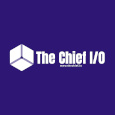Kubernetes Is the Future of Infrastructure but What's the Future of Kubernetes?

Predicting what technology will come after Kubernetes is still widely speculations of promising technologies. Technologies mentioned in this article will not necessarily replace Kubernetes but mostly work side-by-side to deliver efficient, secure, and resilient cloud-native applications if they eventually go mainstream.
As the complexity of cloud applications increases with the adoption of the technology, more advanced tools have become widespread among developers.
One of these tools is Kubernetes, which was brought about by the need for easy management and orchestration of Docker containers.
But Kubernetes has been with us for a while now. Out of enthusiasm, you may want to ask, what cloud technology will come after Kubernetes?
As we all know, cloud computing is a fast-evolving field, so accurately predicting what technology will come next in the cloud computing world is no easy feat. But if we look at the prominent areas where the current cloud technologies do not cover enough, we can possibly guess right.
Already, various not-so-popular technologies have looked to address some of these areas, even though they are yet to be widely accepted.
Micro VMs
A promising cloud technology that may become widely accepted after Kubernetes is micro VM Kubernetes distributions. AWS Firecracker is the most popular of micro VM Kubernetes, which packages micro virtual machines into a Kubernetes cluster to enhance the security, workload isolation, and efficiency of resources.
Ignite, another initiative by Weaveworks, is an open source Virtual Machine (VM) manager with a container UX and built-in GitOps management.
Other development efforts like slim aims to build and run tiny vms from Dockerfiles.
Unikernels
If it eventually goes mainstream, Unikernels will be an exciting technology that will help cloud professionals harness the full benefits that are supposed to be offered by containers in cloud-native environments.
Unikernels are considered a hybrid of VMs and containers and provide improved security and agility than we have in both container and VMs.
Instead of the shared operating systems and Kernels like we have in containers, Unikernels packages application images with an operating system, its own Kernel, and all other relevant dependencies required to run in different environments.
Unikernels images are highly optimized with smaller footprints and can boot faster than containers because they contain all necessary dependencies. These features will quickly make it the “professional’s favorite” when the technology finally goes mainstream.
Also, Docker recently acquired Unikernel systems. That signals that it may be adding support for Unikernels soon to make them more usable in the actual development and production environments.
No/Low-code containerization and orchestration platforms
As DevOps and cloud engineers are looking to make the tools they use and their entire workflow easier and automated, an increase in the adoption of low-code platforms is expected.
Already, there are no-code platforms like ShuttleOps and CloudPlex that provide easy drag and drop CI/CD functionality for building and deploying docker containers.
When new low-code platforms with even better functionalities are launched, there will be an increase in the adoption of no-code/low-code, resulting in the technology becoming a new norm.
Functionalities such as taking a users Dockerfile or docker compose file and running it without the user having to go through other complexities like nodes, pods, and integrated services.
Security improvements on Kubernetes
One of the backlashes of Kubernetes is security. As the adoption of Kubernetes accelerated, so is the number of threats targeted at its clusters.
Cryptojacking is one of the most common such attacks on Kubernetes clusters in which attackers carry out cryptocurrency mining operations on the victim’s cluster.
Even though professionals using Kubernetes find ways to secure their clusters, a built-in high-security feature will make container management and orchestration much easier.
Lightweight Kubernetes distributions
To avoid the complexities of installing Kubernetes, cloud engineers and DevOps professionals will use lightweight versions of Kubernetes. Lightweight distributions like k3s are easy to install via the command line. K3s offers a more secure and lightweight storage backend packaged in a single binary with reduced size.
Kubernetes for edge and IoT
Like lightweight Kubernetes is expected to get more adoption, other Kubernetes distributions such as microk8s and kubeedge are expected to reach more adoption for edge computing and IoT applications. These Kubernetes distributions provide the simplicity and lightweight needed for edge computing.
Kubernetes multi-cluster management will be easier using some tools
With the increasing number of teams and organizations running multiple Kubernetes clusters in the clouds, managing numerous Kubernetes clusters gets difficult. Cluster management tools like Rancher, Kubespray, CiliumMesh, Submariner, Skupper, and Istio will make the management of multi-cluster Kubernetes environments more accessible and efficient.
Get similar stories in your inbox weekly, for free
Share this story:

The Chief I/O
The team behind this website. We help IT leaders, decision-makers and IT professionals understand topics like Distributed Computing, AIOps & Cloud Native
Latest stories
HIPAA and PCI DSS Hosting for SMBs: How to Choose the Right Provider
HIPAA protects patient data; PCI DSS protects payment data. Many small and mid-sized businesses now …
The Rise of GPUOps: Where Infrastructure Meets Thermodynamics
GPUs used to be a line item. Now they're the heartbeat of modern infrastructure.
Top Bare-Metal Hosting Providers in the USA
In a cloud-first world, certain workloads still require full control over hardware. High-performance computing, latency-sensitive …
Top 8 Cloud GPU Providers for AI and Machine Learning
As AI and machine learning workloads grow in complexity and scale, the need for powerful, …
How ManageEngine Applications Manager Can Help Overcome Challenges In Kubernetes Monitoring
We tested ManageEngine Applications Manager to monitor different Kubernetes clusters. This post shares our review …
AIOps with Site24x7: Maximizing Efficiency at an Affordable Cost
In this post we'll dive deep into integrating AIOps in your business suing Site24x7 to …
A Review of Zoho ManageEngine
Zoho Corp., formerly known as AdventNet Inc., has established itself as a major player in …
Should I learn Java in 2023? A Practical Guide
Java is one of the most widely used programming languages in the world. It has …
The fastest way to ramp up on DevOps
You probably have been thinking of moving to DevOps or learning DevOps as a beginner. …
Why You Need a Blockchain Node Provider
In this article, we briefly cover the concept of blockchain nodes provider and explain why …
Top 5 Virtual desktop Provides in 2022
Here are the top 5 virtual desktop providers who offer a range of benefits such …














